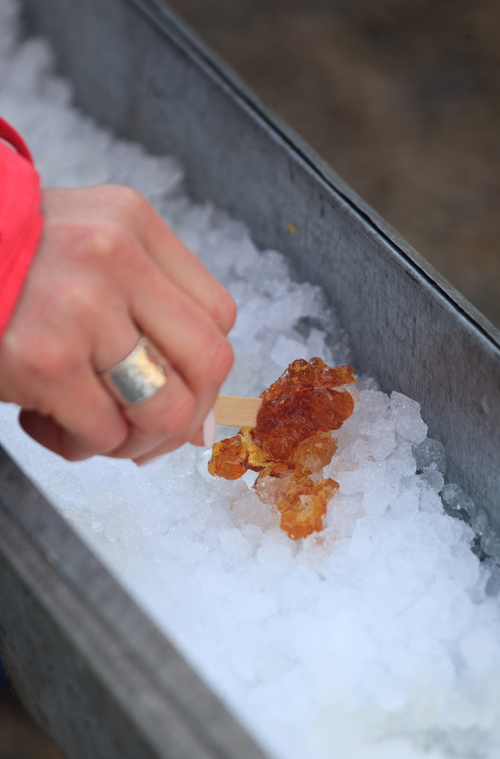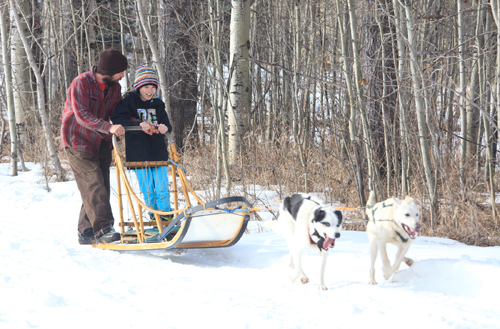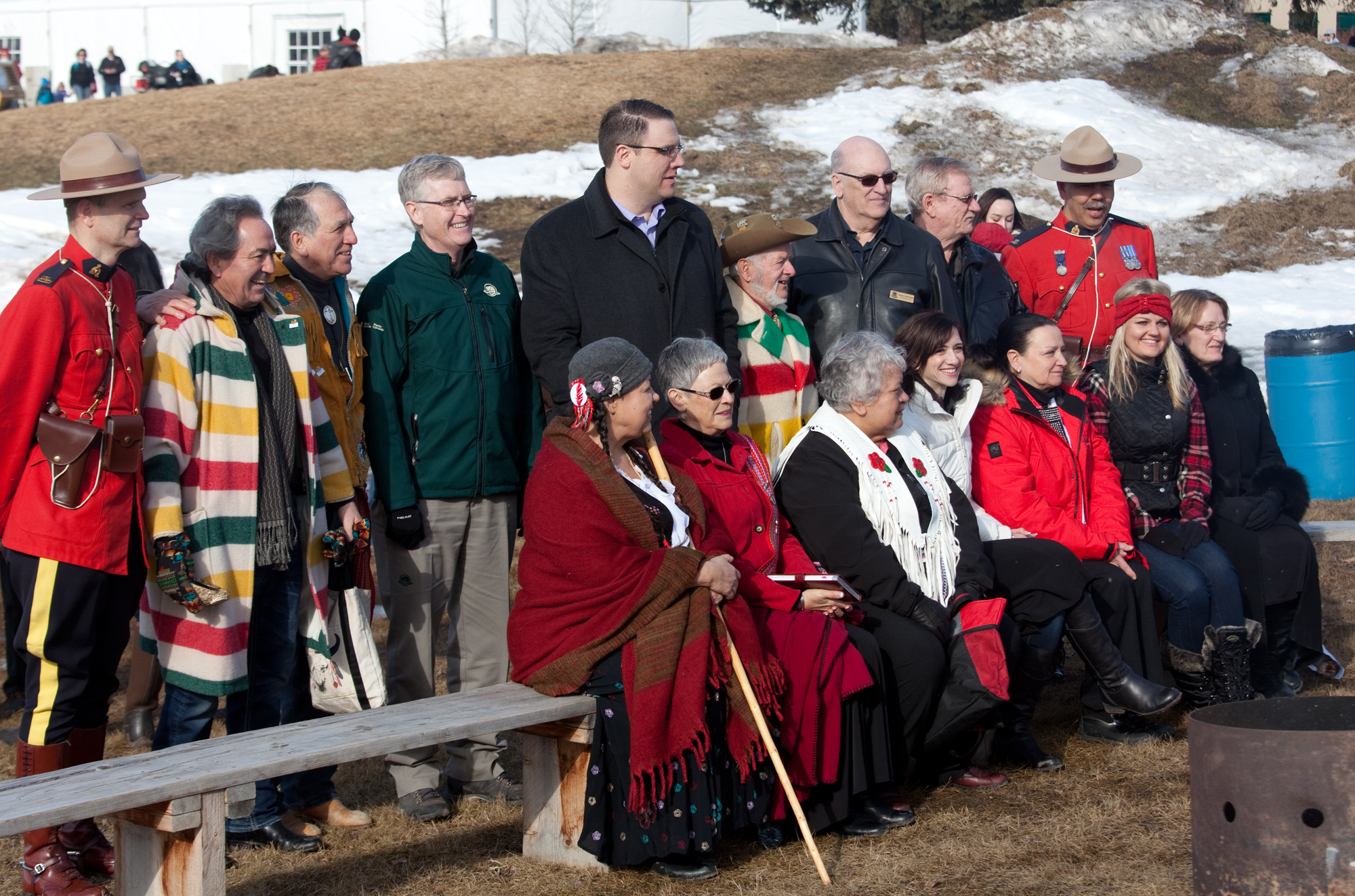ANDREW PENNER
It was a smorgasbord of “Canadiana,” if there ever was one. In four fun-filled hours we ate maple taffy, went dog-sledding, listened to foot-stomping fiddle music, ate bannock, watched snow-dusted Plains Bison in a paddock, enjoyed a sleigh-ride, hunkered down in a tipi, pulled toboggans, dressed up as voyageurs, had a canoe race, learned about the forts and fur trade, and met plenty of interesting Métis people.
Help your friends #DareToExplore. Share this page on Twitter.
When it was all said and done, our experience at the Métis Homecoming - a Canada 150 kick-off celebration at the Rocky Mountain House National Historic Site – was about as memorable, educational, and “hands-on,” as a Canadian cultural experience can get.
Of course, given the significance of the Rocky Mountain House National Historic Site, it wasn't all that surprising that plenty of good times and larger-than-life experiences were had. The history-rich site, located just five minutes from the town of Rocky Mountain House on the banks of the North Saskatchewan River, is a national treasure.
It was here where four rugged, timber-framed fur trading forts once stood. They were the gateway to the unexplored west for the storied fur-trading industry, which, in many respects, forged the foundations of our country. The two companies that planted roots here – Hudson's Bay Company and the North West Company – fought tooth-and-nail for the lucrative fur-trading business that took place on the site for 76 eventful years.
The first forts at Rocky Mountain House were built in 1799, one by each of the two companies. And, interestingly, there were nine different indigenous groups that came to Rocky Mountain House to trade. Some of them, such as the Ktunaxa, would often travel for days to reach the fort.
But, not only is the Rocky Mountain House National Historic Site an ancient fur-trading fortress, it was the home base for legendary Canadian explorer, trader, and map-maker David Thompson. Between 1792 and 1812, Thompson made numerous expeditions from RMH and mapped more than 3.9 million square kilometres, roughly one-sixth of the North American continent. (A beautiful replica of his famous map is on display in the Visitor Centre.)
While the forts are long gone (plenty of archeological remains are still visible and protected by Parks Canada), the next chapter of the amazing fur trade days is currently being written by Parks Canada. And it involves experiencing the history, the drama, in new and exciting interactive ways.
For example, the Visitor Centre is home to a unique 3-D Virtual Reality Experience that is an opportunity to journey back in time to the bustling fur trade activities that went on at the centuries-old forts. But this is just the tip of the iceberg when it comes to experiencing the history first-hand.
Interpretive trails, Métis crafts, bannock-making, blacksmithing, drumming, dancing, traditional games, story stations, dream catcher workshops, and camping in tipis, trapper tents, and trapline cabins are the many ways visitors can immerse themselves and experience this vibrant history. (The Rocky Mountain House National Historic Site is accessible year-round, however, the Visitor Centre and many of the demonstrations and interactive activities are be open from May 10 to Labour Day.)

Even though my family's four-hour visit during the Métis Homecoming Celebration was short, it was certainly sweet. True, we took a lot in. We learned a lot. And our eyes were opened to a way of life, a window of Canadian history, which now has a brand new meaning for my family of little voyageurs.
More Information:
Parks Canada official page www.pc.gc.ca/rockymountainhouse
2017 Voyageurs Rendezvous http://www.voyageursrendezvous.ca/en/?page_id=23
Contact [email protected] for questions or call 403-845-2412
Like this story? Share it on Facebook!



